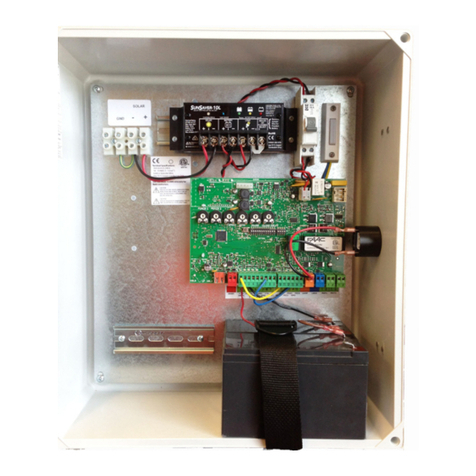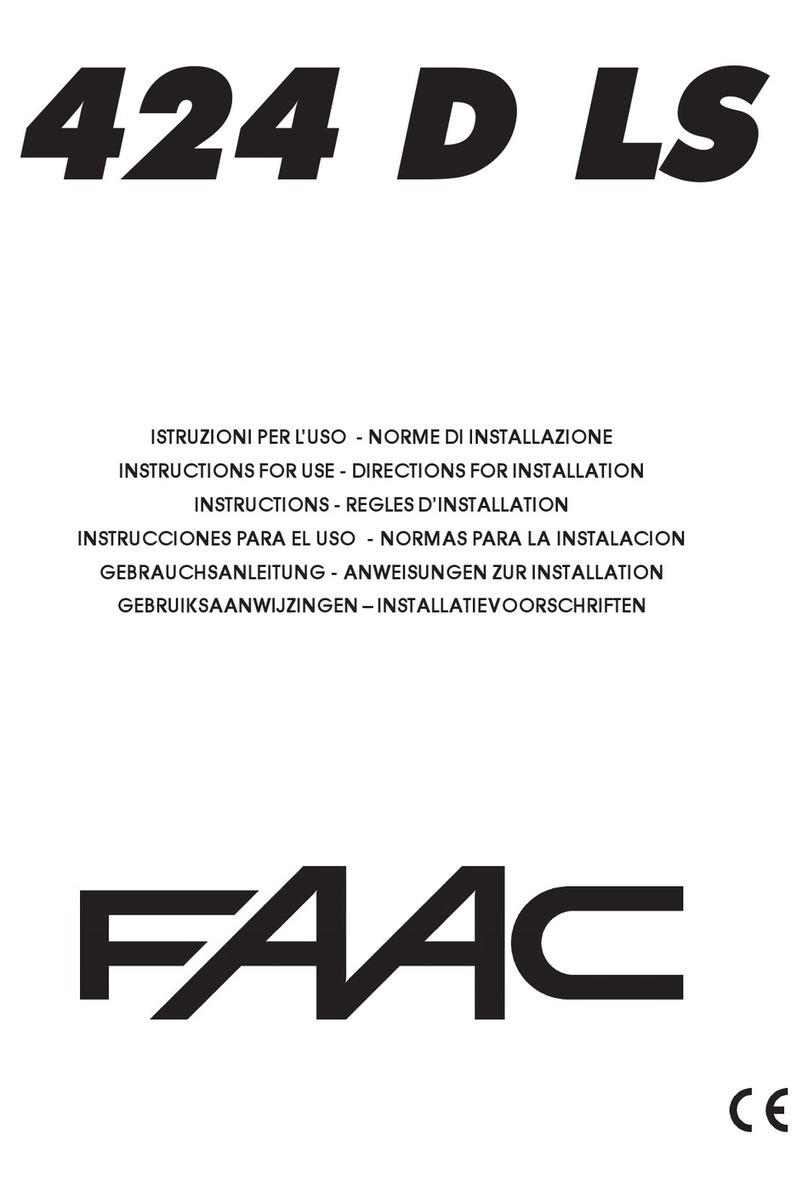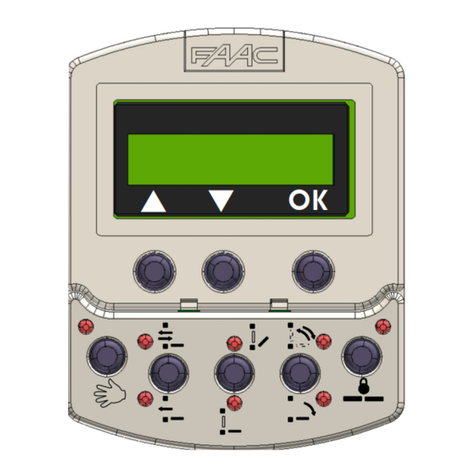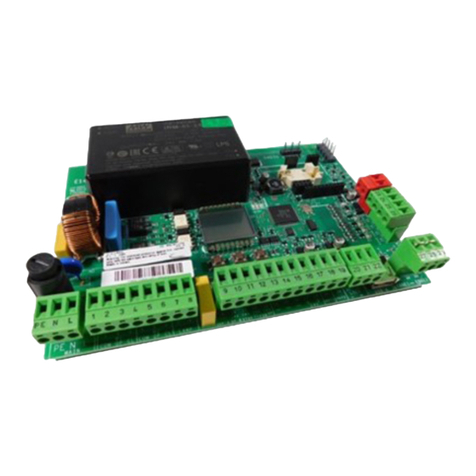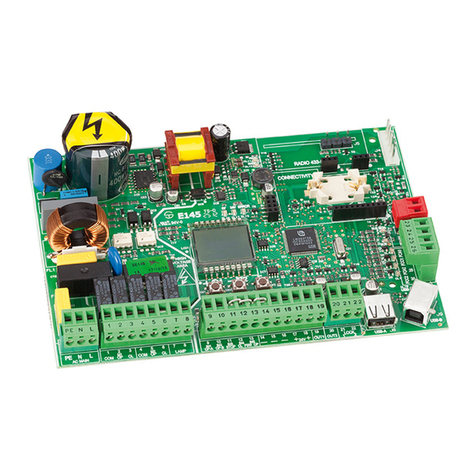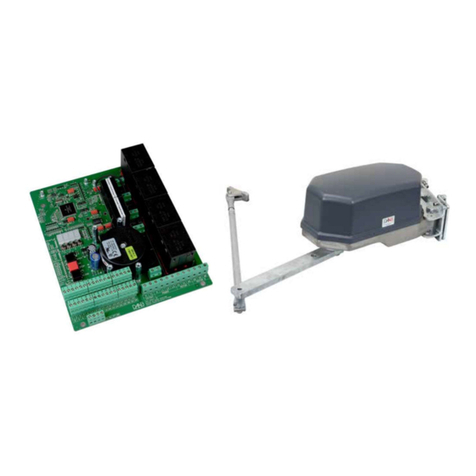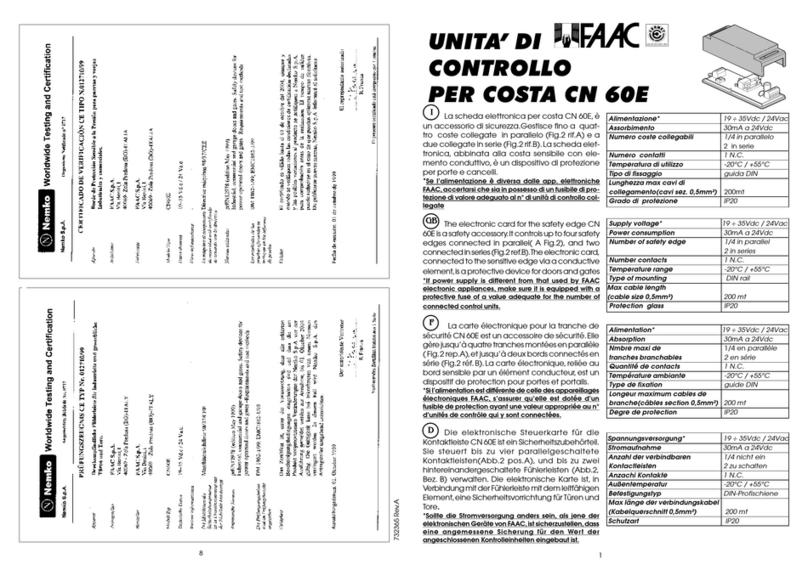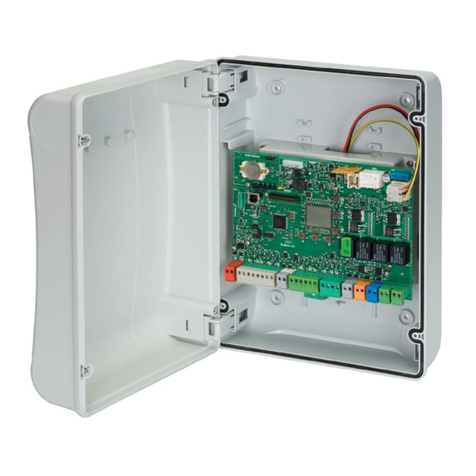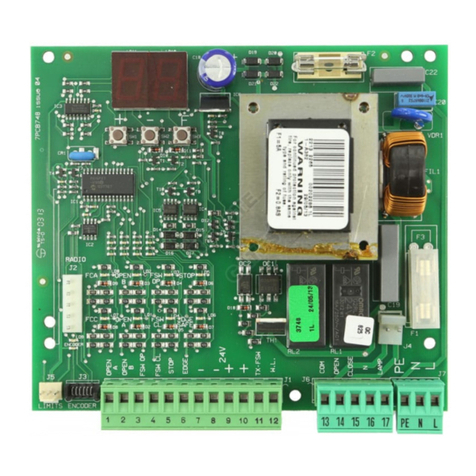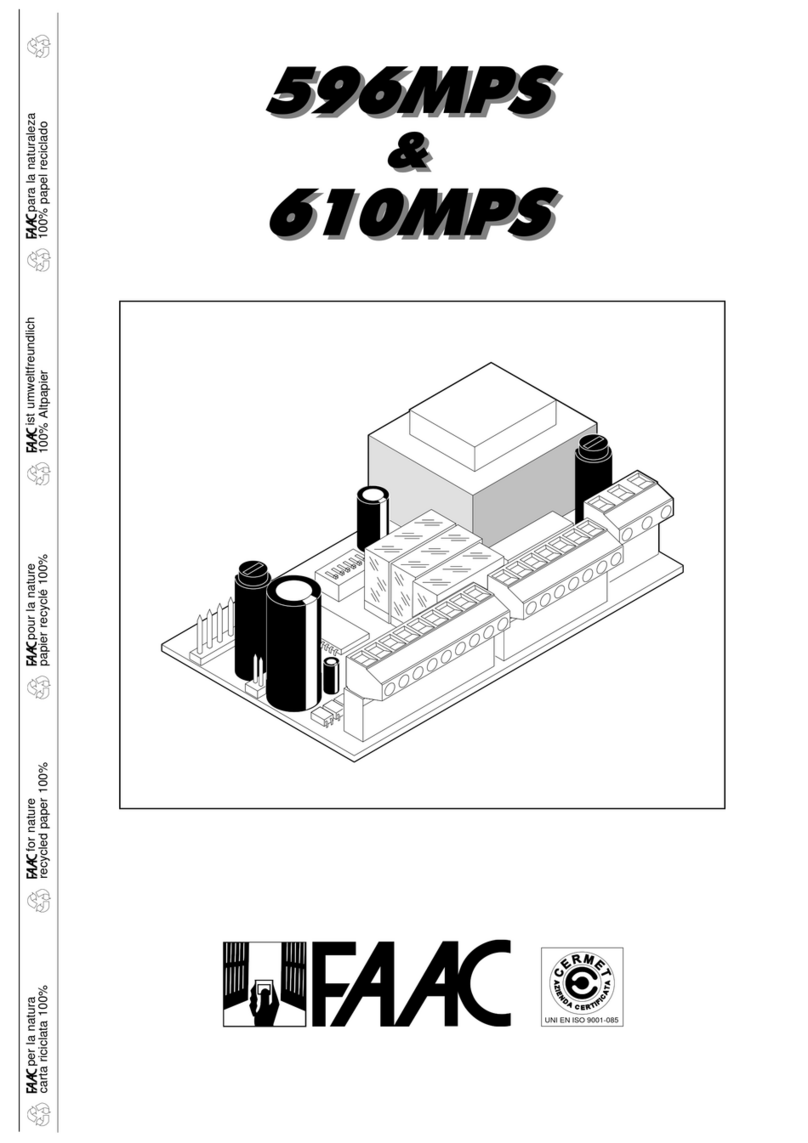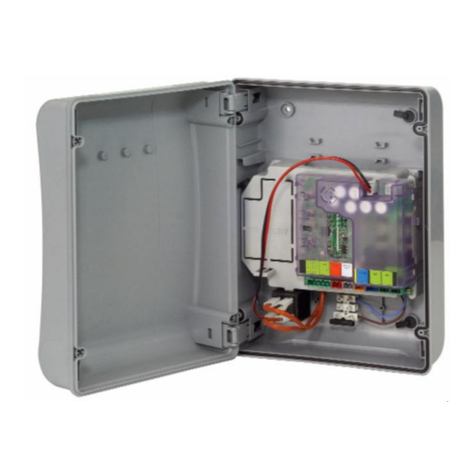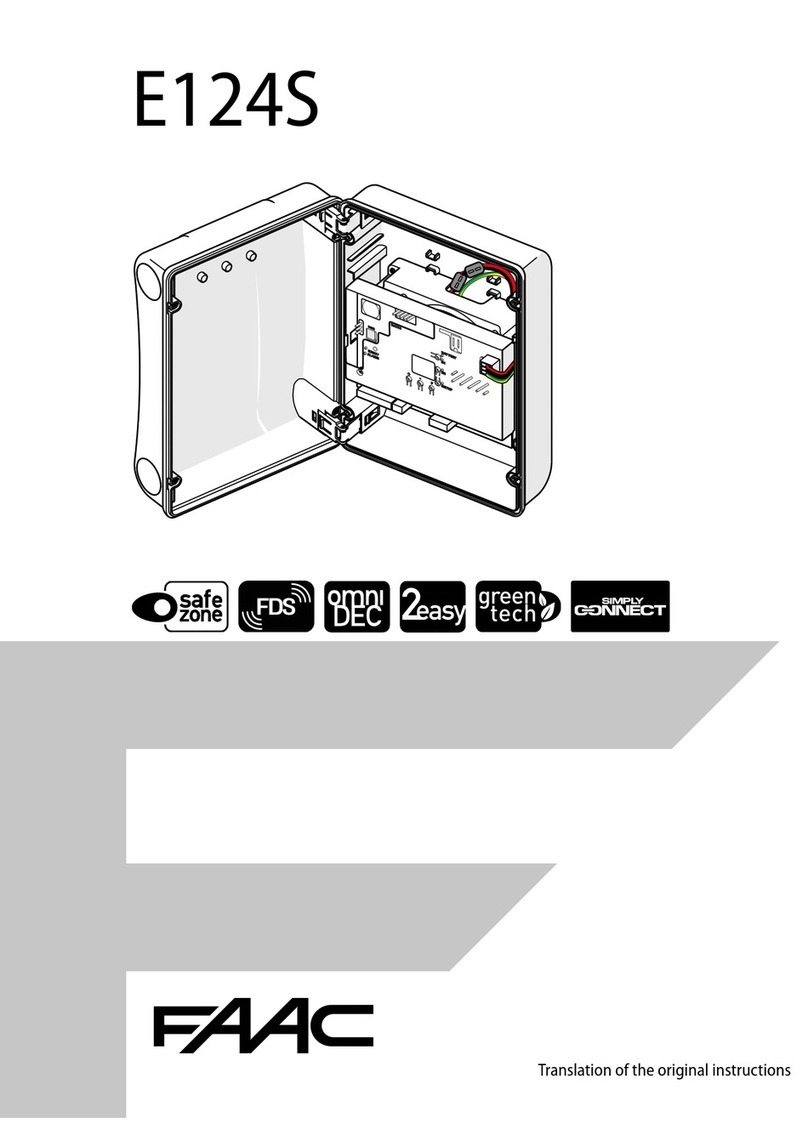
3
24 V DC
3W
12 V AC
FCC2
LIMIT-SWITCHES
230 VAC
or
115 VAC
60 Hz
VAC MAX.
60W
OPEN A
OPEN B
STOP
BLUE
BLUE
NO NC
Maglock
+
-
Note: Capacitors are supplied with the operator or the prewired enclosure
For connection
of the safety
devices, see the
next paragraph
Terminal Block J4 - Motors and Warning Lamp
M1: COM / OP / CL: Connection to Motor 1
Must be used for single-leaf configuration
M2: COM / OP / CL: Connection to Motor 2
Cannot be used in single-leaf configurations
LAMP: Warning lamp output ( AC V ~)
Terminal Block J1 - Accessories
OPEN A - “Total Opening” Command (N.O.):
Any pulse generator (push-button, detector, etc.) which, by
closing a contact, commands opening and/or closing of
both gate leaves. To install several full opening pulse gen-
erators, connect the N.O. contacts in parallel.
OPEN B - “Partial Opening” Command (N.O.) / Closing:
Any pulse generator (push-button, detector, etc.) which, by
closing a contact, commands opening and/or closing of
the leaf driven by motor M1. In the B and C logics, it always
commands closing of both leaves. To install several partial
opening pulse generators, connect the N.O. contacts in
parallel. See logic chart for exact operation.
STP - STOP Contact (N.C.):
Any device (e.g. a push-button) which, by opening a con-
tact, is able to stop gate movement. To install several STOP
devices, connect the N.C. contacts in series. It also can act
as an addional monitored opening safey.
Note: If STOP devices are not used, connect a jumper between
the STP terminals and -.
CL FSW - Closing Safety Contact (N.C.):
The closing safety input is used to protect the leaf move-
ment area during closing. While closing, an activation of
the the safety device connected to this input will reverse the
movement of the gate leaves. This input is inactive during
the opening cycle. To be compliant with the UL325 standard
at least one monitored safety device must be connected
to this input. See the next paragraph on how to connect
a monitored device. If this input is active when the gate is
open it will prevent the leaf closing movement.
OP FSW - Opening safety devices contact (N.C.):
The opening safety input is used to protect the leaf move-
ment area during opening. While opening, an activa-
tion of the the safety device connected to this input will
reverse the movement of the gate leaves. This input is
inactive during the closing cycle. To be compliant with the
UL325 standard if this input is used to protect an entrap-
ment zone at least one monitored safety device must be
connected to it. See the next paragraph on how to con-
nect a monitored device. If this input is active when the
gate is closed it will prevent the leaf opening movement.
– - Negative for power supply to accessories
+ - 24 VDC - Positive for power supply to accessories
Important: Accessories max. load is 500 mA. To calculate
current draw, refer to the instructions for individual
accessories.
-TX FSW - Negative Power to photocell transmitters.
This terminal is used for the photocells monitoring feature.
Compliance with the UL325 standard requires connecting
the transmitter photocell negative power to this input and
activating the FAIL SAFE function (see Advanced Program-
ming). This will allow the 455 D board to check the correct
operation of the safety photecells before each opening
or closing cycle.
Terminal Block J5 - Indicator-Light and Electric Lock
W.L. - Power supply to indicator-light
Connect a 24 VDC - 3 W max. indicator-light, if neces-
sary, between this terminal and the +24V supply. To avoid
compromising correct operation of the system, do not
exceed the indicated power.
LOCK - Power supply to electric lock
If necessary, connect a 12 Vac electric strike lock be-
tween this terminal and the +24V power supply. Or con-
nect a 12 Vac relay and a Maglock following the sche-
matic above.
Terminal Block J6 - Limit-Switches
These inputs are dedicated to the connection of opening
and closing limit switches
5. Electric Connections







